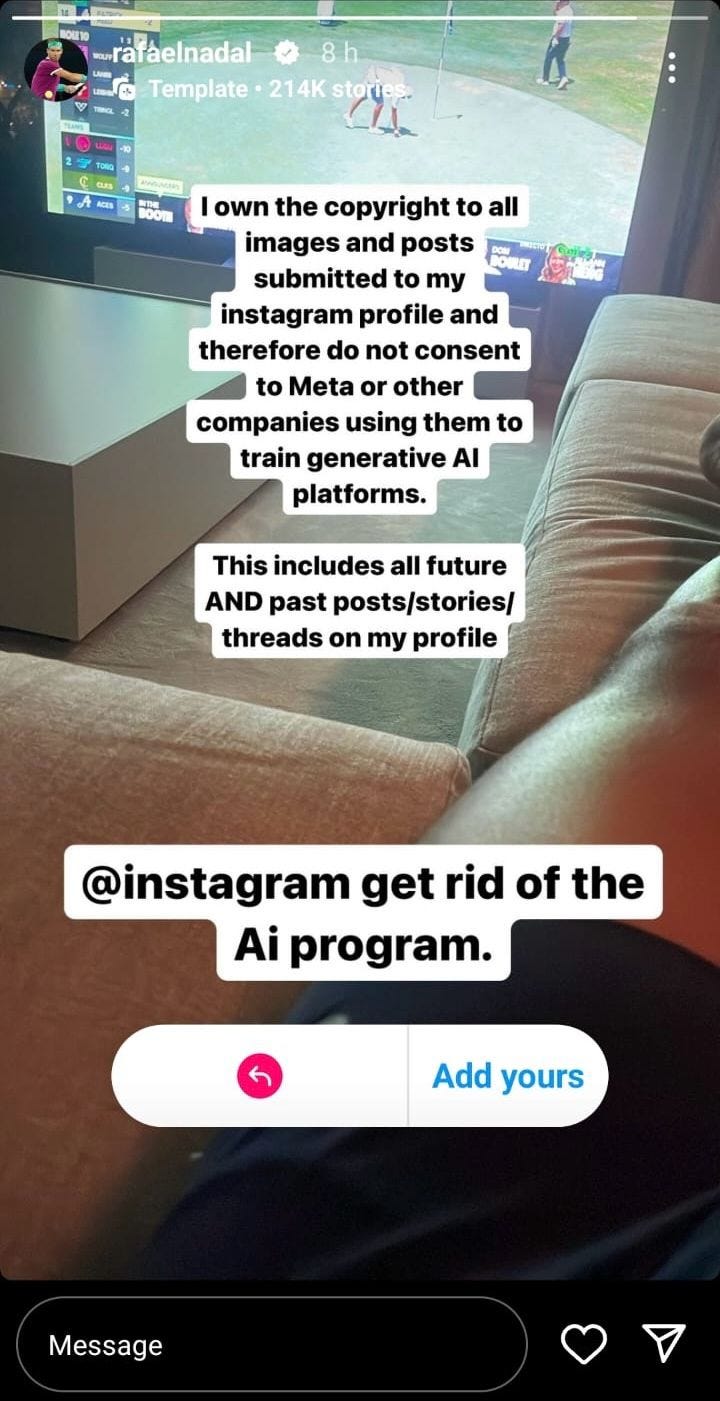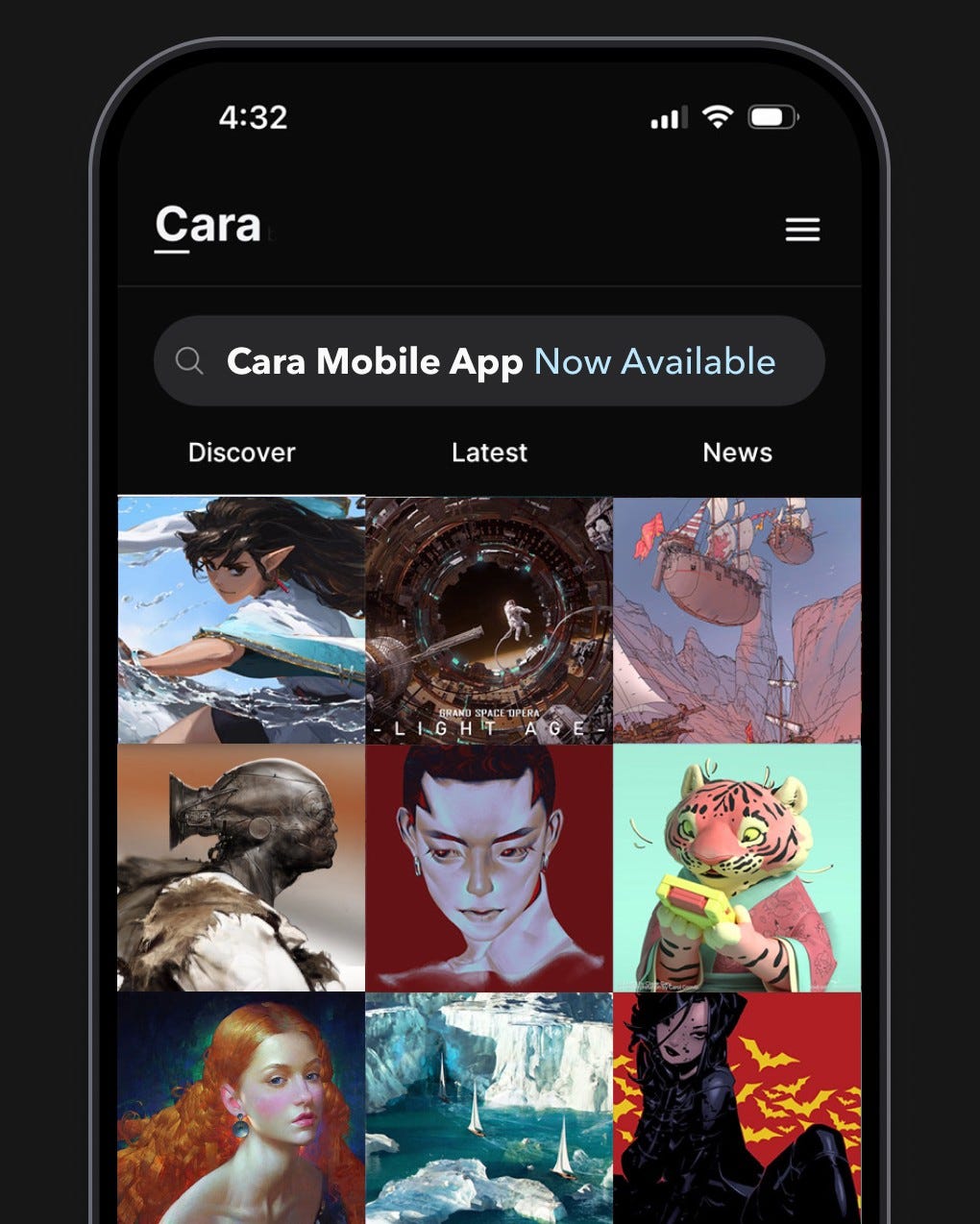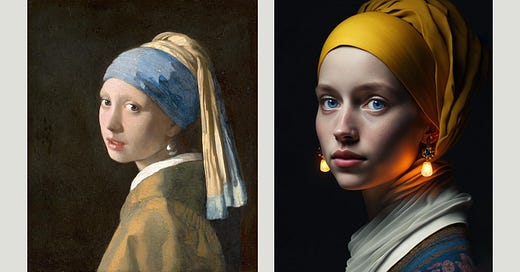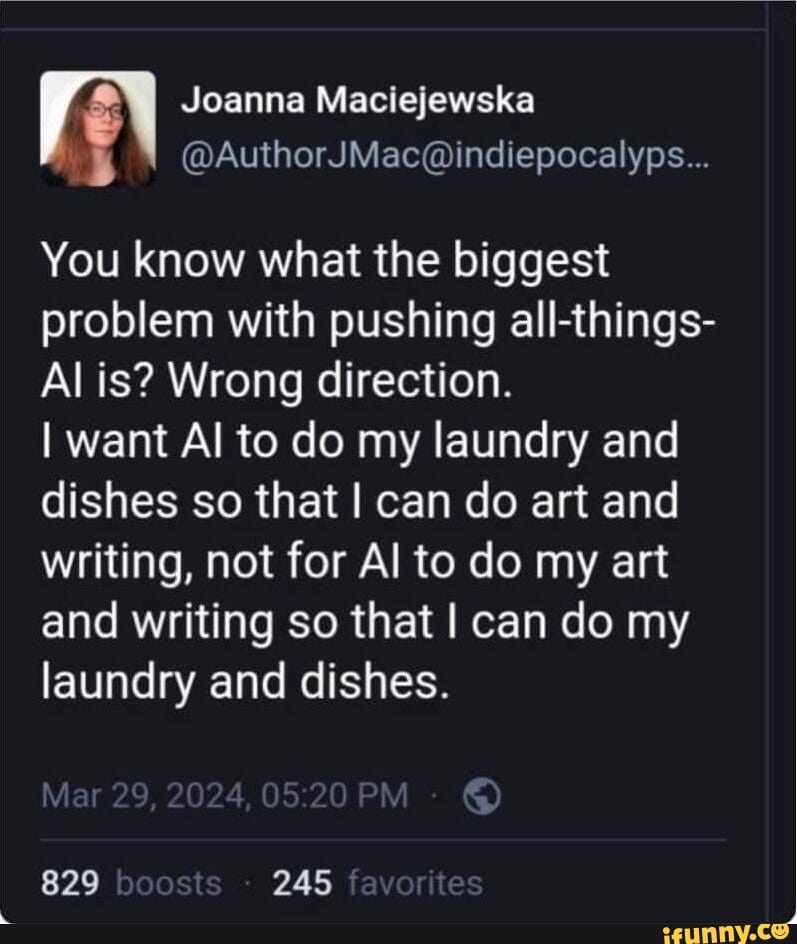
Over the past month, my Instagram feed has been flooded with posts by artists wondering what their future looks like with AI first nibbling away at their work and now seemingly gulping it down in one fell swoop. Many are deeply concerned that the unique styles and techniques they’ve spent years perfecting are now easily reproducible by AI, threatening their livelihoods. The uncertainty about the future of their careers, already a challenging path, has only intensified.

Meta (the company that owns Facebook and Instagram) quietly updated its privacy policy last fall, allowing all content shared on their platforms to be used for training their AI models. Essentially, everything we post, from the mundane to the profound, is being fed into Meta’s AI. Recently, Meta introduced an opt-out process for the EU, allowing users to exclude future posts from being part of the AI model, with a deadline of June 26th. This has caused a surge in downloads for Cara, an anti-AI app for artists, as hundreds of thousands seek alternatives and question their futures.
This very real conundrum leaves a few options that I’ve seen many artists weigh in the past weeks:

Leave Instagram: This feels like a real option only if you have a big enough following that you are not worried about it or if you have a strong IRL presence and never really invested in social media. The reality is this is just not realistic for most artists (and Meta knows this to be true too). Cara, the app I mentioned earlier, is an anti-AI app for artists, but therein lies the problem. Your buyers will likely not be on Cara, so if you are joining for community, that’s great, but it will only take you so far.

Mask your art so that AI can’t use it: You add a mask or cloak to your images to prevent AI models from reading and copying the image and art style. The cloak effectively changes how the image is read by the AI model but is indiscernible to the human eye, so you could upload a masked image on Instagram and still share your work. Glaze is the main tool I’ve seen that does this, and it came out of a project led by University of Chicago researchers. The Verge also has a great breakdown of how to opt out of specific AI models.
Video above is the generative AI art based on 200 years of art of the MOMA. Installation view, Refik Anadol: Unsupervised, The Museum of Modern Art,
New York, November 19, 2022–April 15, 2023.
Use AI: The reality is that AI isn’t going anywhere and is likely going to be part of all of our lives in many ways. There are some clear industries that have already been shifting their design and art needs to AI and will continue to do so. I would recommend not focusing on those, or if you are, figure out how to use AI to make that simpler for you, so you can spend time doing the art and design that you are really excited about. Examples of industries that are in this world are stock imagery, logo design, book covers, and marketing materials.

We know history repeats itself. Before photography, the goal of fine art was to accurately capture the real world. And the idea of photography scared artists, but they innovated and were able to experiment more with form, colors, and styles. It catalyzed key modern art movements including Impressionism, Cubism, and Abstract Expressionism. Journalism has seen a similar fate with the fundamental shifts across print as first blogging, then social media, and a whole new genre of content creation and consumption was formed. As the saying goes, the only constant is change itself, so if you take one piece of advice from this, it is to take this as an opportunity to adapt.
In response to a subreddit r/ArtistLounge where Absolutelynobody54 shared, “What scares me the most about AI art is that it may make humans stop doing art,” the most upvoted response is this: “If dying at a young age from sickness and poverty didn't stop the creative spirit of the human race throughout the millennia, machines won't be enough.”
I couldn’t agree more.




